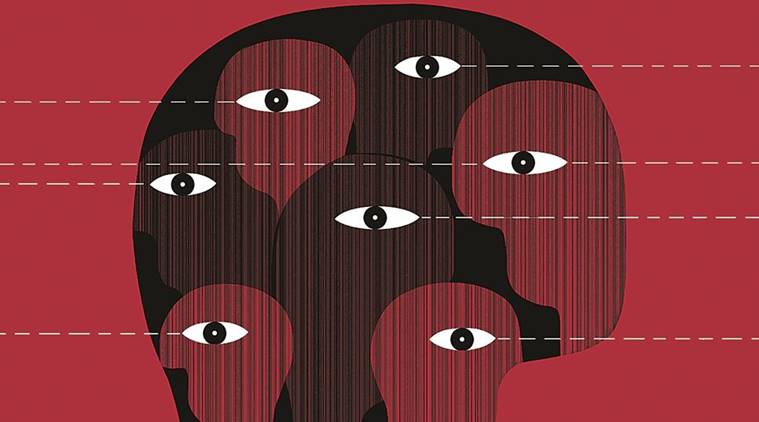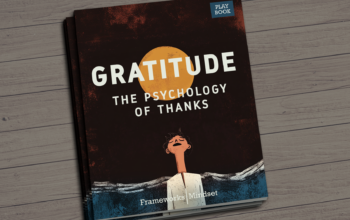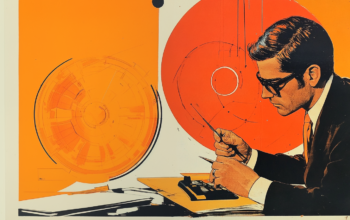The Diversity Problem
Lykewyse is a startup based out of San Antonio, TX, offering an assortment of personal assistant apps. In hopes of hitting the big time with a new grocery app, the leadership team pulled out all the stops. They hired the best tech and management personnel in the industry and did all the necessary market research. They weren’t satisfied with riding the wave with this app—they wanted to lead the way with it.
But they had a problem.
Despite the fact that their market was primarily women and a mix of ethnicities, their leadership team was 100% white and male. They had the technical expertise but not the cultural understanding to really succeed. As the CEO put it, they were “at severe risk of making boneheaded mistakes” because they were out of touch with their customers. They needed to be more diverse.
And so they set out to make their leadership look more like their customers. They had to let go of several otherwise qualified leaders to make room for women and people of color. As they saw it, they had to do it. If they didn’t think like their clients, they were history.
After bringing in many big-name women and people of color, the company touted one of the most diverse leadership teams in tech, and boasted that they had the widest range of perspective to make the right decisions. They made some key changes to the design and marketing, and readied the app to ship.
On launch day, spirits were high. At first. The numbers were low from the start. And by the time the initial campaign was over, they had sold about 25 percent the number they had planned for. Something somewhere went astray.
As it turns out, the app wasn’t intuitive to the users, mainly women who shop. They didn’t want to have to switch back and forth between apps; they wanted the content to be integrated. The Lykewyse app, largely due to changes made because of the new leadership, was cumbersome and not user-friendly. Of course, these were exactly the kind of “boneheaded mistakes” that they sought to avoid by bringing on a more diverse team. How in the world did they get it wrong?
Breaking down the app in their retrospective, they attempted to understand what had happened. One of the men asked one of the women leaders if she used it when she went shopping. There was silence. “I don’t go grocery shopping,” she said, and then looked to the other women. None of them really did the shopping either. It was their husband who did the shopping, or they ate out all the time, but none ever did the kind of shopping that the app was designed for.
And then it hit them. The women were brought on to make their leadership team more diverse, but they had failed to add the perspective that was most crucial to their success—that of their female customers. How could this have possibly happened?
* * *
Below is a list of demographics. Read them and guess which celebrity it refers to.
- Born in 1948 in Great Britain
- Male
- White
- Married and remarried
- At least two children
- Net worth greater than $220 million
- Likes dogs, sports cars, fine wines, and traveling
If you guessed Prince Charles, you are wrong.
The correct answer is Ozzy Osbourne. Actually, these data match both Ozzy Osbourne and Prince Charles, but I was thinking particularly about the Oz, so you lose.
That is a mean trick, I know. I play it to point out an important fact: Demographics can mislead. Looking at the stats, it’s clear that the Oz and Ol’ Chuck have an uncanny amount in common, but you’re not going to advertise to them with the same image; you’re not going to talk to them in the same way; and you’re not going to sell them the same product. If you go strictly by demographics, you may very well skew your message in the wrong direction. You might be pushing plaid golf knickers when your customer might be more interested in black eyeliner and bat feeders.
Consider the story of Lykewyse. Their move toward a more diverse leadership team made sense on the surface—they wanted to think more like their customers. As it turned out, they were looking at demographics which didn’t help them as it should have and ultimately might have hurt them.
Their case is not out of the ordinary. They wanted to make their leadership team more like their target customers. But they boiled their customers down to a few demographic categories and called it a day. Their customers were women, so they wanted to bring on more women leaders. But the women that they brought on weren’t the same kind of women that comprised their market. Their market consisted in middle-class, family-oriented mothers; their new leaders were more independent than those in their market, more career-oriented, and more technical as most had established themselves in the startup environment. None of these characteristics are easy to quantify, so they couldn’t use them when deciding whom to hire. And yet, ultimately, those characteristics were enough to set them apart from their market and hinder them from providing the key perspective.
* * *
These days, everyone’s bonkers over diversity. No matter what the question is, it is just assumed that diversity is the answer. Need to stay relevant with customers? Diversity! Big product launch coming up? Diversity! Want to innovate to stay ahead of the game? Diversity!
There is good reason: The more diverse our group is, the more angles on the truth we will have and the closer to full understanding we can get.
Recall the six blind men in the Indian traditional who all describe an elephant differently based on which part of the beast they can touch. One touches the trunk and says the elephant is like a snake; another touches the ear and says it’s like a fan; another touches the leg and says it’s like a tree. The fact is they must combine their perspectives to fully understand what the elephant is like.
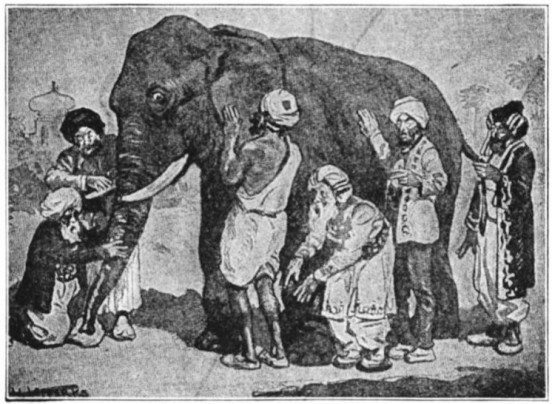
Truth is like an elephant, and we are like the six blind men. The more perspectives we can amass, the fuller our picture of the truth, the better our decisions, and the greater our success will be.
As such, companies are falling over themselves to instate diversity and inclusion programs. HR departments emphasize diversity and inclusion through compliance courses; so called ‘diversity business groups’ give different types of people a place to connect; and diversity fairs give folks a chance to learn about and experience a variety of cultures.
There’s only one problem in all of this hyperventilating: We don’t know what diversity is.
If you Google the word ‘diversity’, you’ll get a picture of a group of people with different skin colors, a mix of men and women, and possibly a variety of ages. To the typical American, this is diversity. It is what diversity looks like in government, universities, the media, and corporate America, and if you have it you have diversity. In fact, when companies are rated on diversity, they look at only two metrics: skin color and gender. For all intents and purposes, this is the extent of diversity.

But what don’t we see in that picture? We don’t see different cultures (all are clearly Western); we don’t see different styles (all are business casual); and we don’t see any ugly people (because these are all models for a stock photography shoot). To be sure, we don’t see differing religions, politics, or philosophies because there is no reliable way of capturing those differences in an image—the way one thinks is not visible.
As it is with the startup Lykewyse and our Ozzy/Prince Charles thought experiment, viewing diversity in this way is limiting and possibly misleading.
This conception of diversity is more troubling than it might seem: By defining diversity as a mix of skin color and gender, we make it very visual, and, by making it visual, we make it base. The assumption is that, if we have different skin colors or genders, we come from different places, and, if we come from different places, we must think differently and thus provide something different to the team.
Did you notice what happened there? By making diversity visual, we are forced to prejudge a person’s character based on very superficial things. Far from empowering or enlightening, this smacks of the kind of mentality that proponents of diversity and inclusion fought against in the 1950s and ’60s.
In perhaps the most powerful line of rhetoric of all time, Martin Luther King asserted: “I have a dream that my four children will be judged, not by the color of their skin, but by the content of their character.” Now, largely due to the policies that his followers instituted, content of character is determined to be the result of skin color, and so the only way to judge someone’s character is by his skin color.
There can be no doubt that visual measures are convenient. So too are they powerful. Of all our senses, the visual is the one from which we derive the most information by far—10 million pieces of information per second comes from our visual senses compared to 1 million for auditory and fewer for the other senses. If you want to make an impact, you want to make it visual.
But, as we have seen, when diversity is made a visual matter, it becomes superficial and base. If an HR manager says that we need a certain number of employees with a certain skin color or gender, he is saying that their skin color or gender must determine who they are to some extent, and thus dictate what they provide to the company. Isn’t that exactly what the diversity and inclusion initiatives are trying to fight against?
The problem with our understanding of diversity is that it is visual and thus limited and dangerous. If we are to support a true diversity, we need to go deeper.
A Better Kind of Diversity
If we think about it, the goal of diversity is to secure a variety of perspectives. Yes, a different skin color and gender might mean that you have had different experiences and thus that you could provide different perspectives. But that isn’t always guaranteed—sometimes two people with different genders might have the exact same background and thus provide similar perspectives, just as it was in the Lykewyse example. By the same token, people with the same skin color or gender could have had vastly different experiences and thus arrive at divergent perspectives, just as it was with Prince Charles and Ozzy.
What is most important in all of this is perspective. And, if we hope to provide a truly diverse environment, we have to take into account not just different superficial characteristics, but different ways of viewing the world.
I once had the meaning of perspective explained to me by an eight-year-old girl. I was traveling on a train, and, nearing the station, the passengers were all moving toward the exit. A family gathered by the door, mother, father, a girl, and her younger brother. Each was carrying a huge amount of luggage and the little boy was struggling. He let out a moan: “This bag is too big!” Without missing a beat, the girl said, “No, you’re just too small!”
Perspective is the way you look at something, the mental tools in your box with which you decipher, understand, and interact with the world around you. We all have different tools, which are reflected in how we approach the various scenarios we deal with. The little boy was viewing things subjectively—what did he as a boy want at this moment? The little girl was viewing things objectively—what was it that the family was trying to accomplish and what was needed from each family member to get there? It was the same situation, but two different perspectives.
We see the same kind of mental flipping throughout our culture. Consider the great thinker Michel de Montaigne, who, while playing with a cat wondered whether the cat was not really playing with him. Or consider the spiritual saying: Instead of telling God how big our problems are, let’s start telling our problems how big our God is. Perspective allows us to view the world from multiple angles, to get a fuller picture of the truth before us so as to make the best decisions. Diverse perspectives are good. The question is, how do we ensure the most diverse perspectives?
It turns out, most people have a well-founded perspective based on how they think and act. Everyone has preferences and so everyone has an approach to life that can be utilized in these kinds of situations. Altogether, a person’s approach to life amounts to what might be rightly called ‘personality’—the combination of traits and qualities that form an individual’s distinctive character. It is personality that makes us each unique, personality that drives our thoughts and action, and personality that people see when they get to know us.
And herein lies the solution to the diversity problem. In order to get a fuller picture of the truth, we need diversity, not of skin color or gender, but of personalities. If we can identify everyone’s personality, we can better understand how they would think and act given different situations, we can better assemble and arrange groups, and we can use this framework as a tool to better interact with those who differ. Achieving diversity, then, is a matter not of measuring and categorizing based on skin color or gender, but rather based on personality type.
* * *
Studies show that displaying brain scans automatically increases credibility even if the scans are completely irrelevant to the subject. Accordingly, here is a scan of two brains:
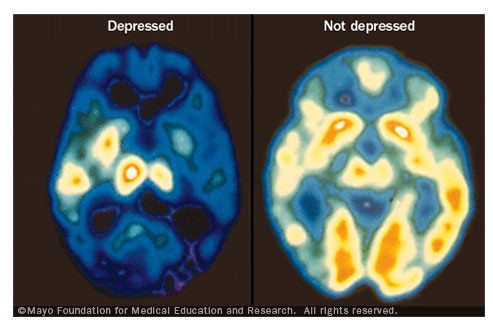
Aren’t you convinced?
Joking aside, what this shows is that two different brains react in different ways given the same stimuli. In other words, people see, digest, and think about things differently depending upon their brain constitution, their temperament, their personality.
Fortunately, we don’t have to all wear portable FMRI machines to understand our personalities. There is a less cumbersome and still reliable way of measuring the way a person thinks—a personality test. The idea of a personality test is simple: Ask the subject about his preferences, consolidate the answers into a type, and derive tendencies and correlations from it.
There is a whole suite of such tests including ‘Strengths Finder’, ‘Color Code’, ‘Big Five’, ‘Enneagram’, and the inimitable ‘Which Furby Are You?’. And, while all have their charms, the ‘Myers-Briggs Type Indicator’ or ‘MBTI’ stands out as the best.
First, the Myers-Briggs test is based on the serious work of Carl Jung, whose 1923 book Psychological Types served as a watershed in understanding personalities. Jung mapped out eight archetypes based on three axes, providing the groundwork Myers-Briggs’ sixteen types on four axes. Altogether, the framework provides a comprehensive view of an individual’s tastes and inclinations.
Second, MBTI is time-tested, being formulated by the mother-daughter team of Katharine Cook Briggs and Isabel Briggs Myers as early as the 1910s, and finalized for widespread use by the Second World War. It has since been the industry standard and consequently there are plenty of data to work with.
While the MBTI doesn’t provide the fidelity that a portable FMRI might, it is remarkably accurate and stands as a dynamic tool for a number of purposes, not the least of which is today’s breathless quest for diversity. As a way to identify various perspectives and a framework with which to synthesize them, the Myers-Briggs method is peerless.
Consider our Lykewyse example. In their effort to provide more diversity, the leadership team sought more women and people of color. As it turned out, their diverse recruits all saw the world in the same way that their precursors did and so failed to provide the perspective necessary to avoid disaster.
If the team had looked beyond the surface to personality traits, things might have turned out differently. They could have measured the way each person interacted socially, how they took in information, processed it, and made use of it. By administering the MBTI or some other personality test, the leadership team could have gained insights into their strengths and weaknesses, thus giving them the tools to capitalize on their fortes and beef up the areas where they were lacking. They could have compared it to their target market so as to better understand how their customers perceived and processed the world.
Diversity is one area in which personality type thinking can be of service. Taking a step back, we find that this concept can be applied to all realms of our lives: school, work, politics, romance—you name it. Personality thinking is relevant in everything we do because it is crucial to understanding the way we think, act, and interact with others.

